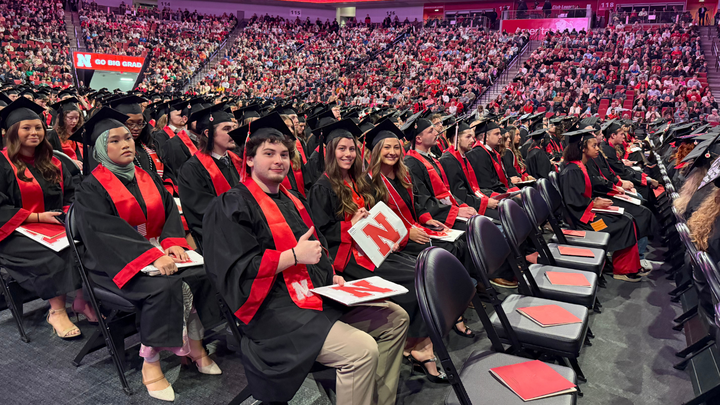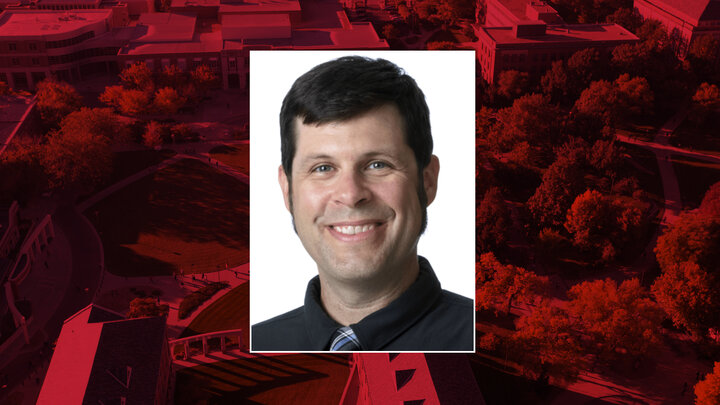Permanent v. Temporary (aka budget v. cash)
The term “budget” can often be confusing as it can mean different things in different contexts. Normally, when using the term “budget” we mean the current plan for the allocation of ALL resources available to the college in the current fiscal year. More precisely this definition corresponds to the “current budget.”
Last week, we discussed the various sources of the college budget. The current budget comes from all those sources – state-aided funds, revolving/auxiliary funds, sponsored program funds and foundation funds. But the current budget can also be understood along an additional dimension – permanent budget and temporary budget, often called “budget” and “cash.” (Do you see why this gets confusing?)
Permanent Budget
Permanent budget refers to the funds that we can reasonably expect to recur on an annual basis. The college is allocated a “permanent budget” in state-aided funds. That means that the university has committed to providing a set level of resources to the college each year. The college can also expect to earn a stable return on endowment funds each year. This return can also be considered “permanent budget.”
Temporary Budget/Cash
Temporary budget or cash are funds that are available to the college during the current year, but we do not have a reasonable expectation that they will recur next year. There are wide variety of sources for cash.
State-aided Funds
The most common and largest source of state-aided cash is what is referred to as cash carry forward. Cash carry forward is the amount of available funds that went unspent last year and were carried over into this year. In the state-aided budget, the most common reason funds go unspent is vacant employee budget lines. The cash carried forward into the current year is available to the college in addition to its annual allocation of permanent budget. Next year, the college will receive another allocation of permanent budget, but the cash carried forward will be completely dependent on how much is utilized this year.
Revolving/Auxiliary Funds
There is no permanent budget in revolving and auxiliary funds. Revolving and Auxiliary funds come from activities in the college – sales and services, fees, etc. If sales go down, revenue goes down and vise versa. Revolving and auxiliary funds can be considered as part of the temporary budget. They can carry funds forward, similar to state-aided funds, but there is no permanent allocation of these types of funds.
Sponsored Program funds
Like revolving/auxiliary funds, there is no permanent budget in sponsored program funds. Once the proceeds of a grant are expended, there is no expectation that the funds will be replaced unless new grants are awarded. Carrying forward unspent sponsored program funds depends upon the rules of the grants.
Foundation Funds
Foundation funds can be considered both permanent and temporary. We can expect that interest from our endowed funds will recur on an annual basis. Therefore, these can be considered permanent budget even though the fund amounts fluctuate based on the market. Additionally, the college receives many expendable donations of various sizes each year. Once these funds are spent, we have no expectation they will recur unless additional donations are received. Therefore, these expendable gifts can be considered temporary budget.
Historical data about foundation funds is difficult to present due to limitations in the source system. However, right now the college can expect to earn a total of $1,034,287 in endowment income to support its activities. In Fiscal Year 2022 (July 1, 2021, to June 30, 2022), 38% of our foundation funds came from expendable donations and 62% came from endowment income.
The college’s current budget is composed of its permanent budget and all temporary budget or cash available in the current year.
Why does it matter?
It is important to understand the difference between permanent and temporary budget because you need different types of funds for different types of expenses. When the college makes a commitment to an ongoing expense – faculty/staff salaries, lease agreements, etc. – it needs to ensure that future funding will be available to support those expenses. Therefore, ideally these types of expenses are budgeted within the permanent budget. Non-recurring expenses or expenses that are easier to end are budgeted within the temporary budget.
A common question that has been asked is “why do we have money to pay for a big student trip, but we don’t have money to hire more faculty?”
At the highest level, the answer to that question is permanent budget vs. temporary budget. A student trip can be funded from the temporary budget. It is a discreet activity or expense and if there are not funds available for it next year, we just will not do it again. But hiring a permanent faculty or staff member is different. To do that, the college must have funds available in the permanent (and in most cases the permanent state-aided budget). If we hire someone, we are committing to paying them now and next year. Therefore, we must ensure that we will have recurring resources available to pay them. If all our permanent budget is allocated, we cannot hire more people.
What happens if we have recurring expenses on temporary budget?
If we have temporary funding available in future years to cover the expense, nothing happens. But if we do not have temporary funds available to support the expense in future, we need to take some action. Fundamentally there are three things we can do – we can end the expense, we can identify new funding, or we can reallocate funding from something else. The college has several recurring needs, met with temporary funding that may need attention in future.
Lecturers and lecturer/ts are considered temporary employees. They are hired on an annual or semesterly basis and are cash funded. The cost of our temporary instructors is approximately $400,000 per year, which means we must have $400,000 available in cash every year to pay these instructors. Unlike many cash funded expenses, temporary lecturers fulfill a recurring need in the college, i.e., they teach classes our students need to progress through their program. We know that next year, we are going to have a very similar number of classes that need instructors and therefore, we are going to need temporary lecturers.
To ensure that we have funding to meet class needs the college (1) tries to manage and minimize this expense and (2) manages its cash flow to ensure that funds will be available. Therefore, we have class enrollment minimums – to ensure we are not offering more courses than necessary and increasing our temporary instructor expense.
Temporary instructors are currently funded from the state-aided cash budget. Vacant faculty lines create cash carry forward to fund these instructors. However, once we fill those faculty lines, our cash carry forward diminishes. We need to monitor our available cash carefully to ensure we can support temporary instruction needs.
What happens if we have recurring expenses on temporary budget?
If we have temporary funding available in future years to cover the expense, nothing happens. But if we do not have temporary funds available to support the expense in future, we need to take some action. Fundamentally there are three things we can do – we can end the expense, we can identify new funding, or we can reallocate funding from something else. The college has several recurring needs, met with temporary funding that may need attention in future.
Lecturers and lecturer/ts are considered temporary employees. They are hired on an annual or semesterly basis and are cash funded. The cost of our temporary instructors is approximately $400,000 per year, which means we must have $400,000 available in cash every year to pay these instructors. Unlike many cash funded expenses, temporary lecturers fulfill a recurring need in the college, i.e., they teach classes our students need to progress through their program. We know that next year, we are going to have a very similar number of classes that need instructors and therefore, we are going to need temporary lecturers.
To ensure that we have funding to meet class needs the college (1) tries to manage and minimize this expense and (2) manages its cash flow to ensure that funds will be available. Therefore, we have class enrollment minimums – to ensure we are not offering more courses than necessary and increasing our temporary instructor expense.
Temporary instructors are currently funded from the state-aided cash budget. Vacant faculty lines create cash carry forward to fund these instructors. However, once we fill those faculty lines, our cash carry forward diminishes. We need to monitor our available cash carefully to ensure we can support temporary instruction needs.
How does the budget change?
Temporary Budget
The temporary budget changes frequently and in a wide variety of ways and can be considered more volatile than the permanent budget.
State-aided
The biggest way the temporary state-aided budget changes is cash carry forward, but there are other ways as well. The college may receive funding from another unit to put on a class. For example, when we teach a WH Thompson course, the WHT program pays the college $5,000. We may also receive “grants” from central offices. We receive some temporary funding each time we teach a winter session course.
Revolving/Auxiliary
Revolving and auxiliary funds are entirely activity-dependent. They change based on the amount of services we sell (Jacht), the number of credit hours we teach (student tech fees) and the number of students enrolled (lab fees). If any of these activities increase, available funds will increase. If they decrease, available funds will decrease.
Sponsored Programs
Sponsored program funding changes with the grants awarded to the college. If we are awarded more grants, we receive more funding.
Foundation Funds
Expendable funds change with fundraising activities. Glo Big Red, the annual fundraising campaign letter and annual giving programs are some examples. If these initiatives are successful, they may increase donations to the college.
Permanent Budget
The permanent budget (as it stands today – we will get to IBB shortly) is more stable and changes in only a limited number of ways.
The university currently uses a historical incremental budget model for its permanent state-aided budget. This means we get a consistent allocation of funds from one year to the next. The only regular changes to the college’s budget are salary reversion and merit increases.
Salary Reversion: Each time a faculty member leaves the college, 15% of their budget line is swept by the EVC’s office to fund campus-wide faculty hiring initiatives. This sweep reduces the college’s permanent state-aided budget.
Merit Increases: Existing faculty and staff may be allocated merit increases. These increases grow the college’s permanent state-aided budget, although they do not provide funding for new college initiatives as they are allocated to support existing employees at the time they are received.
The formula for routine changes to the permanent budget today is very simple.
Last Year’s permanent budget – Reversion + Merit increases = This Year’s permanent budget.
Other changes
Increases: It is rare, but it has happened. Today, this occurs at the discretion of university leadership. There is no formal decision-making process for permanent budget increases. The most common situation for budget increases is when it is negotiated as part of a dean’s hiring package. For example, Dean Veil negotiated the addition of four faculty lines in the college when she was hired.
Decreases i.e., budget cuts: Cuts to the permanent state-aided budget are often scary for employees, since this budget funds faculty and staff salaries. There is a formal shared governance process for this type of budget cut, and it takes time to enact.
Typically, when the university must cut its permanent budget, each unit within the university is assigned a percent to cut. (In 2020, it was 10%). This is known as a horizontal cut because it is applied equally across all units. Each unit decides how they want to apply the reduction within their own budget. The units make a proposal to their reporting vice chancellor, who consolidates the proposals and reports them to the chancellor. The chancellor further consolidates them and then reports the plan to the Academic Planning Committee. This faculty committee reviews all the proposals and requests changes, approves or denies the cuts. The cuts are then reported to the president’s office for final approval. This process typically takes several months. Additionally, for larger cuts the cuts occur over a period of years to avoid disruption in university activities (the 2020 cuts occurred over three years). Vertical cuts are also possible – meaning entire units would be cut instead of giving each unit a % to cut. However, this method has not been employed at UNL in recent memory.
Foundation
The Foundation’s permanent budget (endowment income) can increase when new endowments are created or when our current investments do well. Endowment income decreases when our investments do poorly. To smooth out swings in our endowment income the Foundation does not provide the college the exact amount our funds earned in the market. Instead, they make available for spending 4% of the average market value of the endowment over the past 60 months (five years). This provides a much more consistent and stable income level for the college.
How does this all change under IBB?
The university is in the process of moving from a historical incremental-based budget to an incentive-based budget. This primarily impacts the state-aided budget. Revolving/auxiliary, sponsored program and foundation funds remain largely the same under the new model.
The fundamental difference in the IBB budget is how the state-aided budget (tuition revenue and state appropriations) are distributed. As noted earlier, today they are distributed based on historical allocations. We get what we got last year with some minor changes around the edges.
The benefit of the current budget model is that it is very stable. Our budgets do not change much from one year to the next. The downside to this model is that it does not react to changes in the college, nor does it provide any opportunity for the college to increase its available resources. Today, if we grow enrollment in the college, we do not get any additional resources to serve those students. At a certain point, this disincentives growth. If we cannot meet the needs of the students we recruit, we should not be enrolling them in our programs.
Under the historical model it is also hard to understand the overall university’s budget – how funds are allocated across university units and whether that allocation is appropriate.
Under IBB, the university’s state-aided funds would be allocated based upon activities with the colleges. Undergraduate tuition revenue will be allocated based on the number of credit hours a college teaches (75%) and the number of credit hours a college’s majors take (25%). Graduate tuition revenue will be distributed to the student’s college of record, i.e., all our graduate students’ tuition would come back to CoJMC. How state appropriations will be allocated is still being determined, but will likely include college enrollment, degrees awarded and research revenue.
Using these formulas to allocate funds will make the budget more reactive to what is happening in the college. The idea is that if we teach more students, we get more resources. This provides the college with an incentive to grow our enrollment and teach more students. It also provides us with an opportunity to increase our resources.
But it is not quite that simple. The college does not stand alone in the universe; it is part of the broader university community and the university’s budget is a set amount of money. Therefore, we must be mindful of what is happening on campus and at the legislature. If the university loses enrollment overall and teaches fewer students, there is less money in the pot to allocate to the colleges. If the legislature reduces the university’s state-appropriated budget, college budgets will likely also be reduced. So even if we teach more students in our college, we may receive less funding overall if the university’s budget is reduced for any reason.
This aligns our interests with the interests of the university. Under an IBB budget model it is in our college’s interest for every unit at the university to grow (we just want to grow faster).
One of the concerns with the IBB budget model is that it will introduce volatility into what has traditionally been very stable college budgets. If our enrollment goes down a lot, we could lose resources. To mitigate this concern the university is considering reserving a portion of state appropriations to smooth budgets and using a rolling average of the metrics that drive the allocations. These actions would smooth potential swings in the budget, create more stability for colleges and provide time to address trends upward or downward in a unit’s resources.
The IBB budget model also provides us with insight into how the university uses its resources to provide support services – things like facilities, the research office and libraries. It does this by giving us all the revenue we earn (as a college, we earn the revenue since we teach the classes) and then showing us, through a “tax,” how much of that revenue must be returned to the university to support those resources.
This transparency will provide the opportunity for important conversations about how the university operates and will, hopefully, lead to improvements in both the efficiency and effectiveness of support services.



